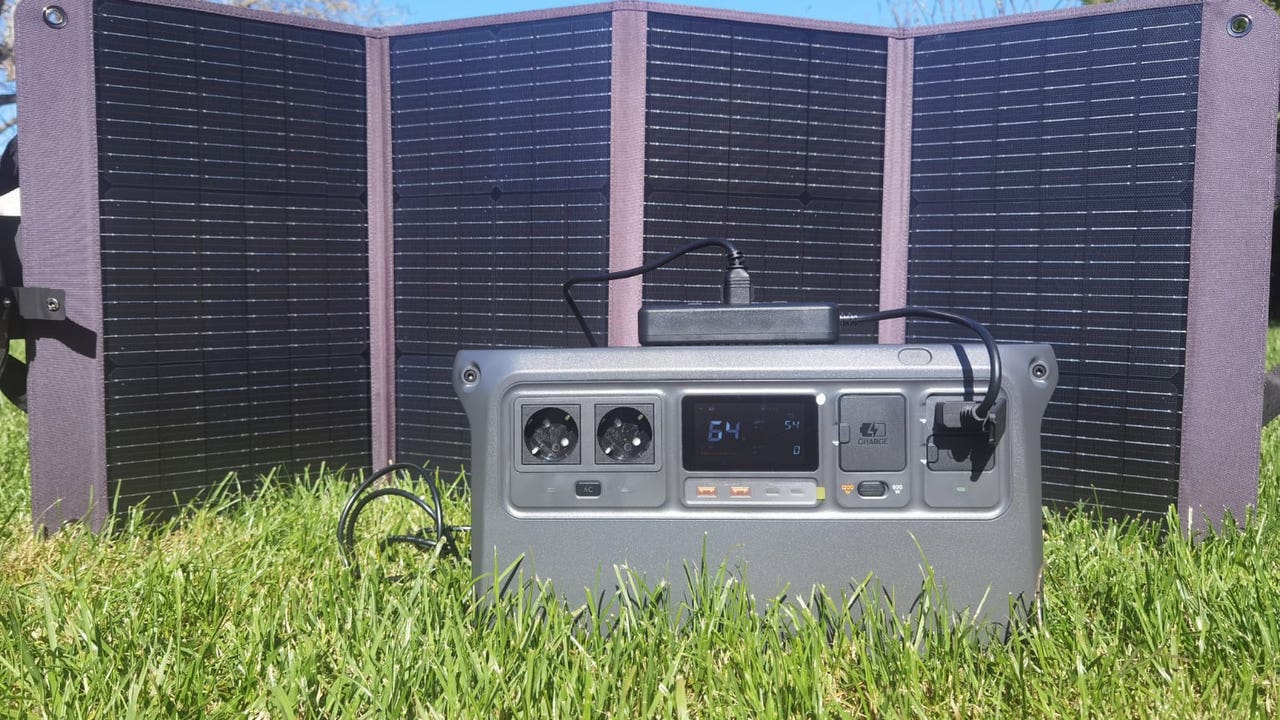Until now DJI was known mainly for its drones and its action cameras, but now it is opening a new section based on its decades of experience in the development of batteries intended, primarily, for drones. Thus it presents a fully autonomous charging station optionthe Power 1000 and the Power 500. We have tested the first of them, with the solar charging panel that further delves into its independent and autonomous character.
In the negative section, it must be taken into account that It is not a battery that we can carry in a backpack on an excursion: the Power 1000 weighs 13 kilos, it is obviously not a light battery. In exchange for this, it provides very interesting benefits. We go point by point.
According to the specifications (and the checks we have carried out), the Power 1000 can be fully charged in just over an hour. This is enough to charge a mobile more than 50 times, keep a portable refrigerator running for almost 20 hours, a projector for about 10 hours and charge a drone in less than 30 minutes (at least 10 times). In the case of DJI drones, the batteries have DJI Power SDC fast charging technology: in less than 30 minutes they reach 95%. The same with laptops (they can be charged up to 9 times) and it is possible to use a refrigerator for almost two days in a row. In fact, it allows charge up to 99% of home appliances thanks to its output power of 2,400 W.
Regarding its ports, It has two USB-C with a 140W output, two more USB-A, a pair of conventional (AC) outputs and two more SDC. To charge it you have the options of doing it through the electrical grid, using a car battery directly or doing it with solar panels, probably the most interesting option due to its versatility.
DJI notes that with the solar panels recommended by them (Zignes) one could Recharge the battery in about two hours. We have tested it, in Asturias and at 10 in the morning and the pace was much slower: a more appropriate estimate would be a full charge in 6 hours… in these conditions.
For this it has a solar panel charging adapter. Initially, I didn't see the point in having an adapter if we already had the panel and the battery, why not connect it directly? The answer is that the adapter allows you to use three solar panels at the same time and then yes, in optimal conditions and in more suitable latitudes, a full charge could be achieved in less than an hour. Makes sense? If what we are looking for in a battery like this is to be completely independent of the environment, it does have it. The first logical scenario is that of content creators, who may be isolated from the electrical grid for a few days and need to charge cell phones, computers, drones and other “small” devices. But we've also tested it with chainsaws, cordless drills and other DIY tools and it works just as well and fast.
Total Its charging capacity is 1,024 Wh and offers 2,200 W of output power. It's very quiet (DJI points it out as the quietest on the market), enough so that you don't realize it's there, neither when charging nor when powering other devices. The safety certifications it has obtained, a total of 26, speak of about 10 years of useful life for its cells.
Regarding the materials, it is very solid in its construction and resistant to the life that will be given. The port protectors are securely attached to the body of the battery, ensuring that it is protected. The side handles are built directly into the body, making it easier to grip and preventing pieces from breaking. And this is a constant throughout the architecture of the DJI Power 1000: it is very solid.
Verdict: This unit costs €999 (twice as much as the DJI Power 500). It is not economical, but it does give us a lot of independence both inside and outside the home and with the solar charging option, we are looking at a battery that guarantees complete autonomy. In the short term it is a risky bet, if we will only use it for a sporadic trip or for occasional loads at home, but if we like to travel, if we are very handy or if we use drones often… It is a very good option.

